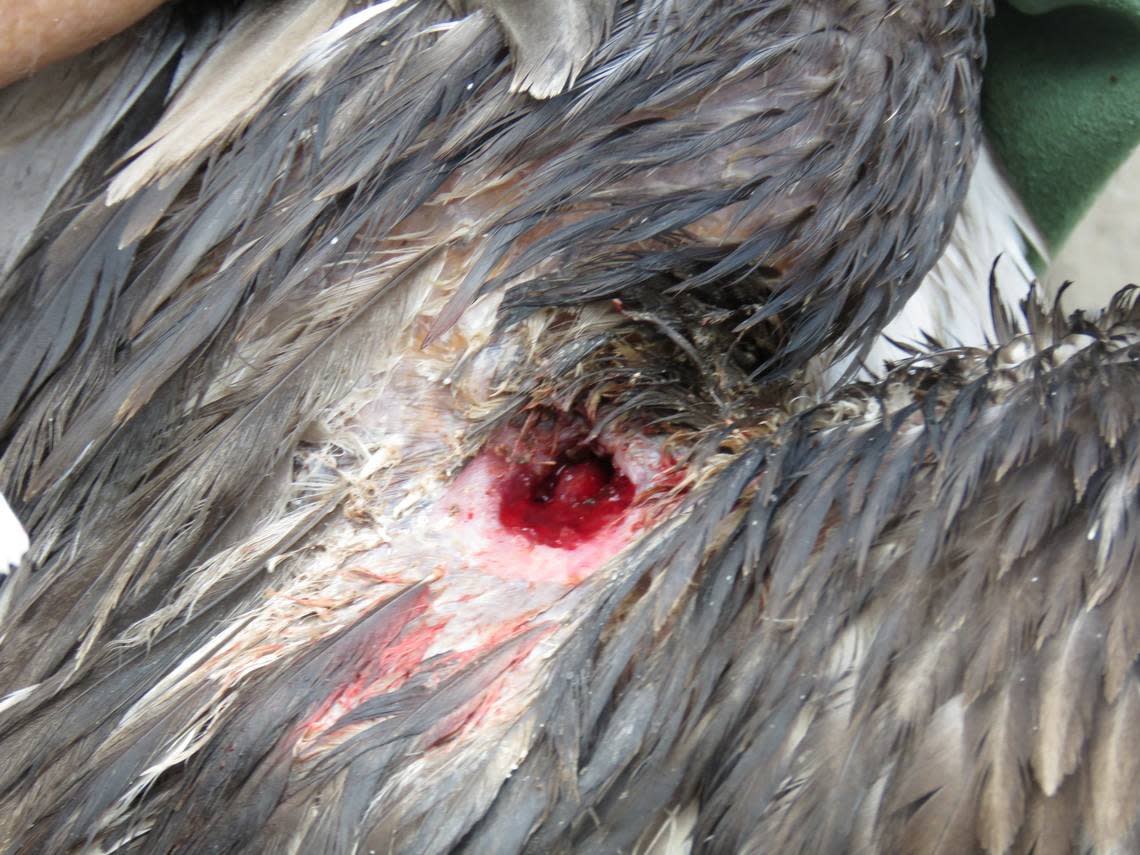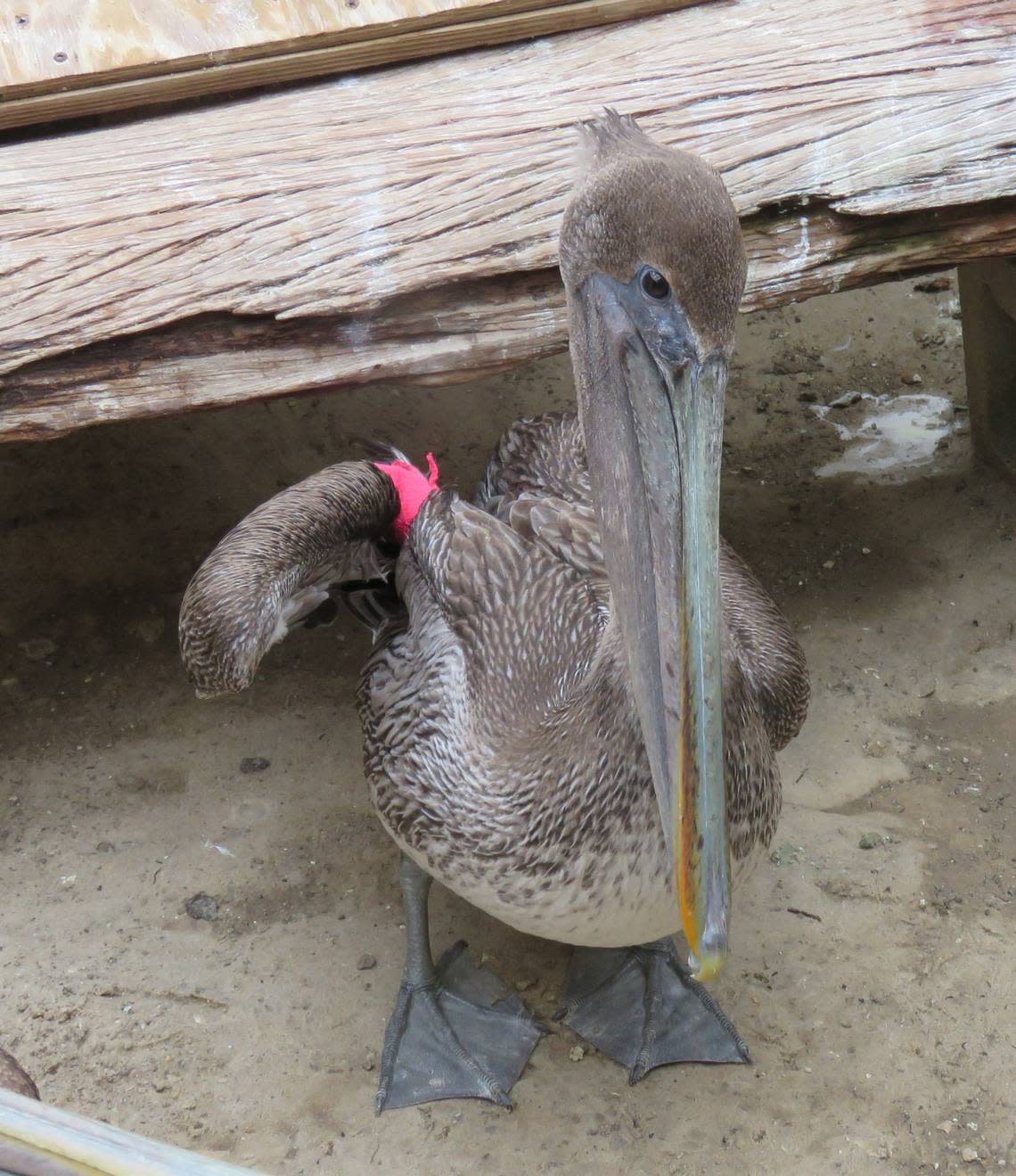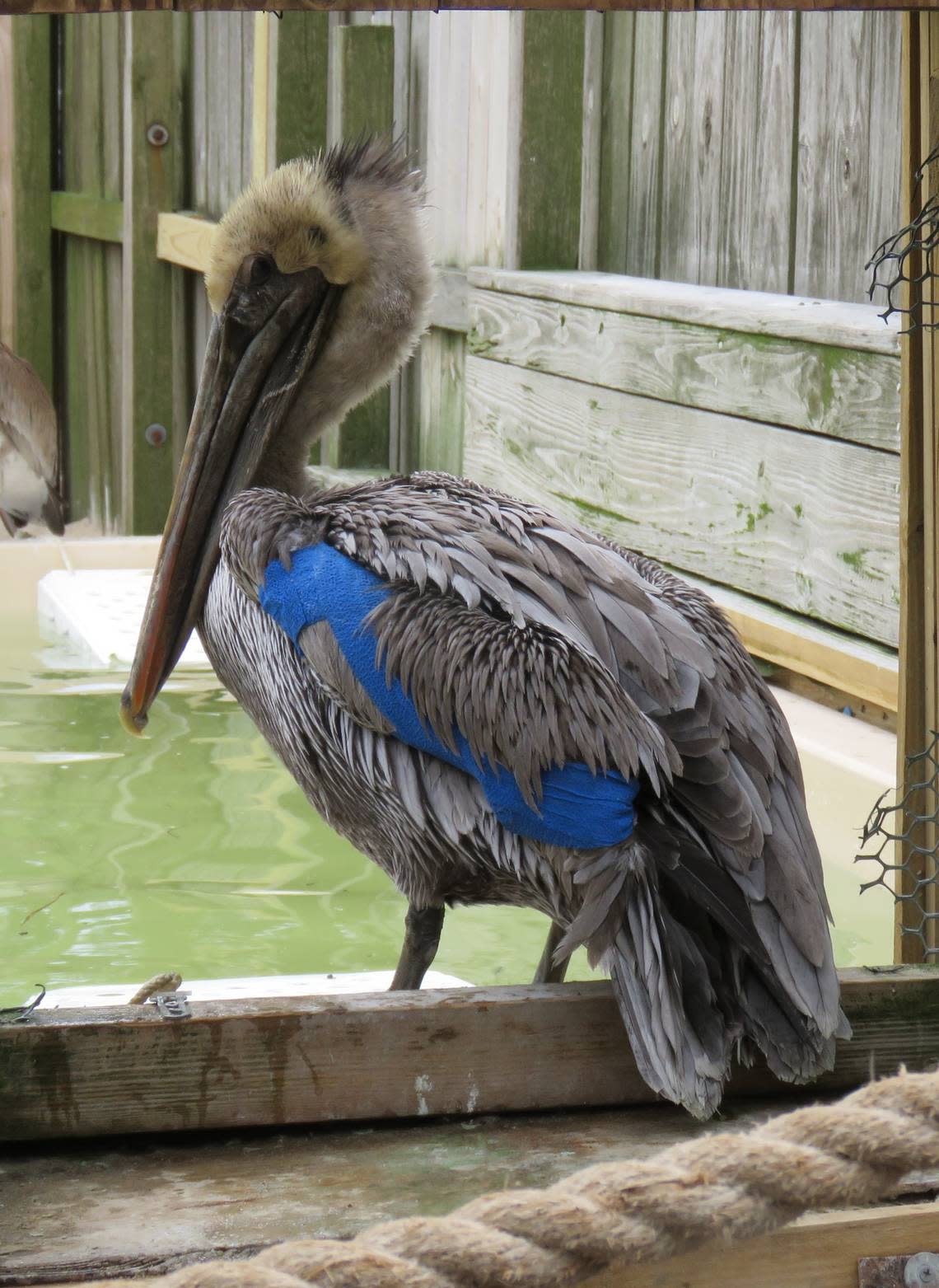Pelicans are being killed on the NC coast. Rescuer suspects out-of-state fishermen
More than three dozen brown pelicans have been found dead or critically injured along North Carolina’s southern coast since early January, and a wildlife rescuer trying to help the birds believes they’re being killed by fishermen from out of state.
“Somebody please make this stop,” Mary Ellen Rogers pleaded during a phone interview from Oak Island, where she runs the Sea Biscuit Wildlife Shelter, dedicated to the care of sick, injured and orphaned coastal birds.
“Somebody asked me what I would do if it were up to me, if the person who is doing this were caught and it could be proven. I’ll tell you. I’d take him a couple of miles offshore, break his arm and throw him overboard,” Rogers said.
“It’s a miserable situation.”
What’s happening to the pelicans?
Many times since Rogers launched Sea Biscuit in 2007, beachcombers have called to tell her about dead or dying pelicans on the beach, most of them with visible wing injuries, including puncture wounds and broken bones. It happens in January, February and March, Rogers said.
“We have some almost every year about this time,” she said. “But never as many as this.”

Through the end of last week, Rogers said she had seen 27 injured pelicans, all of them pulled from beaches between where the Cape Fear River empties into the ocean and the Little River Inlet on the North Carolina-South Carolina line. Of those, Rogers said, only one had a chance of surviving; the rest already had died or would have to be euthanized.
This past weekend, she said on the shelter’s Facebook page on Tuesday, volunteers found another dozen dead pelicans.
What’s causing the injuries?
Rogers said it’s unclear exactly how the birds are being injured, but said there doesn’t appear to be a natural cause.
She suspects that the birds may be getting caught in commercial fishing nets and being hauled into a boat, then injured in the process of being removed from the net.
It could be one fisherman, she said, or several. They may be using a sharp tool that leaves a nickel-sized hole in the birds’ wing, Rogers said. Sometimes, they may be grabbing the pelicans with their hands and pulling, breaking the delicate bones.
Rogers thinks the birds are then tossed back into the ocean, where they die from the trauma or because they can’t fly or feed.
Lindsay Addison, a wildlife biologist for Audubon North Carolina who helps manage nesting colonies of pelicans along the state’s coast, agrees that the injuries appear to be caused by interactions with humans or their fishing gear.
“These are unusual injuries,” Addison said. “This is not the type of thing you see in the normal course of spending time around pelicans.”
Rogers and Addison said they both believe that if a fisherman is responsible for the injuries, it’s not a member of the North Carolina-based commercial fleet. Addison and Roger know many of those fishermen and often hear from them if they spot a shore bird in distress.

Could it be fishermen from out of state?
Because of the timing of the deaths, Rogers and Addison say it’s likely that if fishermen are injuring the birds, it’s someone who comes to North Carolina to trawl for shrimp or work gill nets because of wintertime restrictions on fisheries in their home states.
Rogers said gill nets are a particular hazard for pelicans because they trap large numbers of fish, which the pelicans dive into to feed. When they do, the birds get trapped in the nets as well, and remain there until the fishermen return to haul in the nets.
While some pelicans can be found in North Carolina year-round, Addison said, they’re a migratory species that moves south during the coldest months of the year. Those that migrate begin returning to nesting areas in North Carolina in late February, Addison said.
Migratory birds are protected by the federal Migratory Bird Treaty Act of 1918.

What can be done? How to save pelicans
Rogers has talked with wildlife and fisheries officials, she said.
Meanwhile, anyone who accidentally ensnares a pelican in fishing gear can save the bird from further injury.
Though they’re big – weighing up to 9 pounds with a 6-foot wingspan – brown pelicans are not aggressive, Addison said. The tip of their beak is sharp, “But they can’t chomp. They’re not like an alligator.”
She offers these tips.
▪ Don’t feed pelicans on piers, beaches or anywhere else, because it habituates them to humans, which is never good for wildlife.
▪ If you accidentally hook or net a pelican, don’t cut the line and leave it to trail off the escaped bird. The line will entangle in something else and further injure the bird.
Instead:
Pull the bird in and use a towel or other cloth to cover its head. Wear glasses or sunglasses to prevent its beak from scratching an eye.
With the bird’s head covered, unhook or disentangle it, then let it go.
